Introduction
This tall, semi-evergreen, native shrub or small tree has feathery, finely divided leaflets of a soft, medium green color. The slightly rough stems are a rich chocolate brown or grey, and possess long, sharp, multiple thorns. The small, bright yellow, puff-like flowers are very fragrant and appear in clusters in late winter then sporadically after each new flush of growth, providing nearly year-round bloom. The persistent fruits have a glossy coat and contain seeds which are cherished by birds and other wildlife.
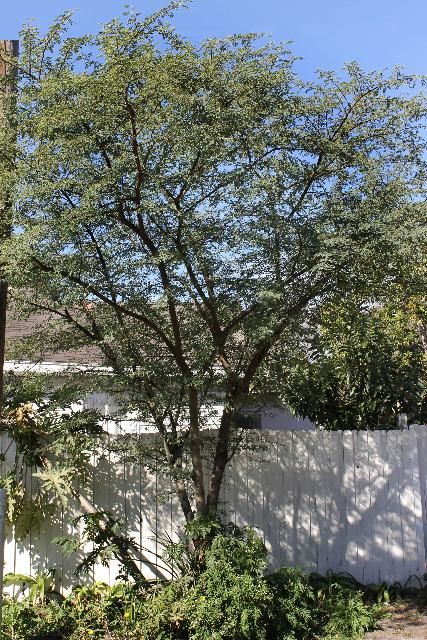
Credit: UF/IFAS
General Information
Scientific name: Vachellia farnesiana var. farnesiana
Pronunciation: Va-KEL-lee-a far-nee-zee-AY-nuh
Common name(s): sweet acacia, Huisache
Family: Fabaceae or Leguminosae
USDA hardiness zones: 9A through 11 (Figure 2)
Origin: native
UF/IFAS Invasive Assessment Status: native
Uses: specimen; street without sidewalk; container or planter; reclamation; highway median; bonsai
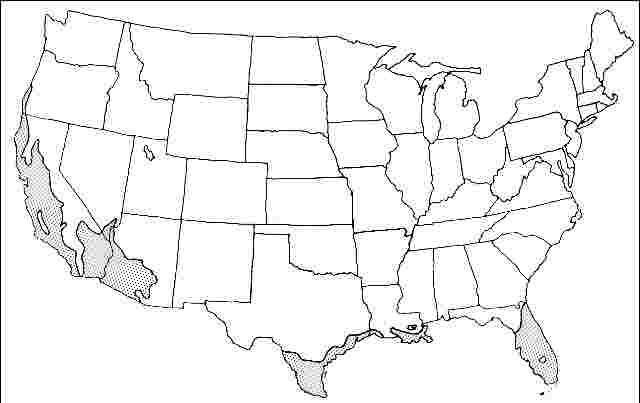
Credit:
Description
Height: 15 to 25 feet
Spread: 15 to 25 feet
Crown uniformity: irregular
Crown shape: vase, round, spreading
Crown density: open
Growth rate: slow
Texture: fine
Foliage
Leaf arrangement: alternate (Figure 3)
Leaf type: bipinnately compound, even-pinnately compound; made up of pairs of 2 to 6 primary leaflets and 10 to 25 secondary leaflets
Leaf margin: entire
Leaf shape: linear
Leaf venation: pinnate
Leaf type and persistence: semi-evergreen
Leaf blade length: 1 to 4 inches; secondary leaflets are ½ inches
Leaf color: medium green
Fall color: no color change
Fall characteristic: not showy
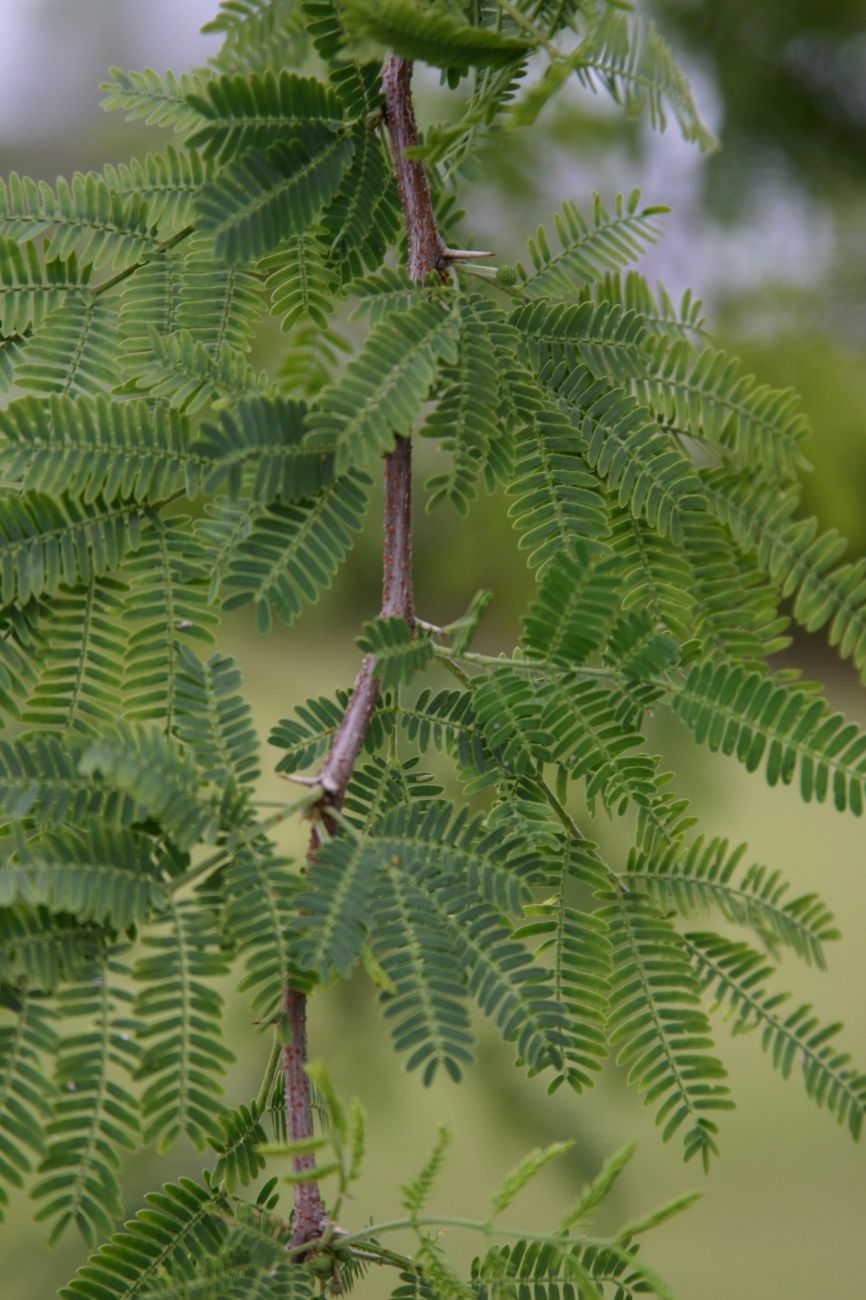
Credit: Stephen Brown, UF/IFAS
Flower
Flower color: bright yellow
Flower characteristics: very showy; fragrant; emerges in clusters on globe-shaped heads that hang from 2-3" long stalks
Flowering: primarily late winter, but also year-round
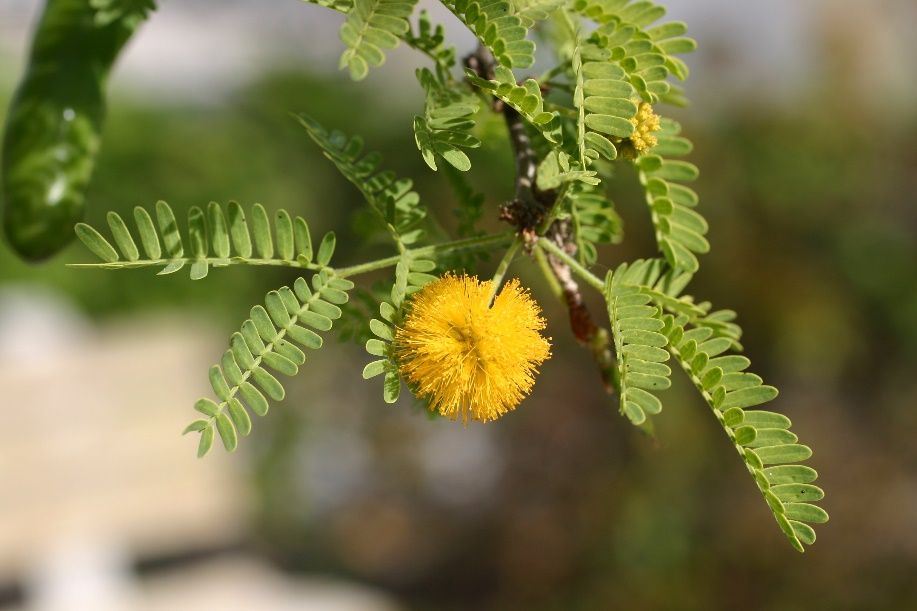
Credit: Stephen Brown, UF/IFAS
Fruit
Fruit shape: pod or pod-like, elongated; cylindrical
Fruit length: 2 to 3 inches
Fruit covering: dry or hard
Fruit color: purplish-red
Fruit characteristics: attracts birds; showy; fruit/leaves not a litter problem
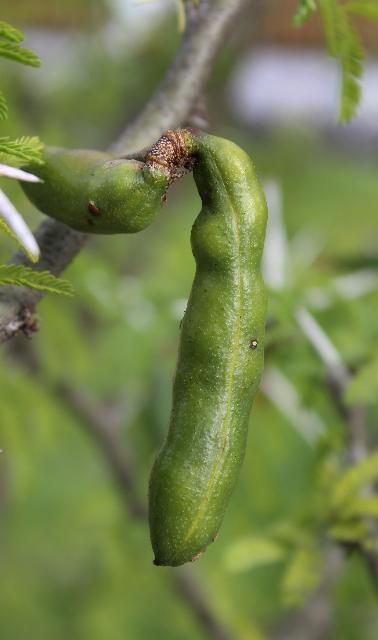
Credit: UF/IFAS
Trunk and Branches
Trunk/branches: branches droop; showy; typically multi-trunked; thorns
Bark: olive green and smooth, becoming gray brown, furrowed, and scaly
Pruning requirement: needed for strong structure
Breakage: resistant
Current year twig color: brown
Current year twig thickness: thin
Wood specific gravity: unknown
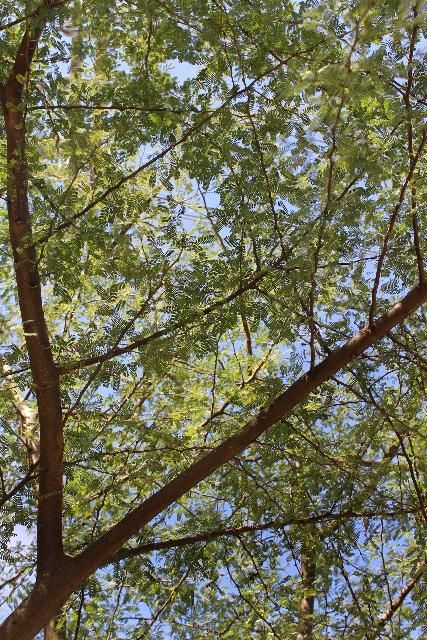
Credit: UF/IFAS

Credit: Stephen Brown, UF/IFAS
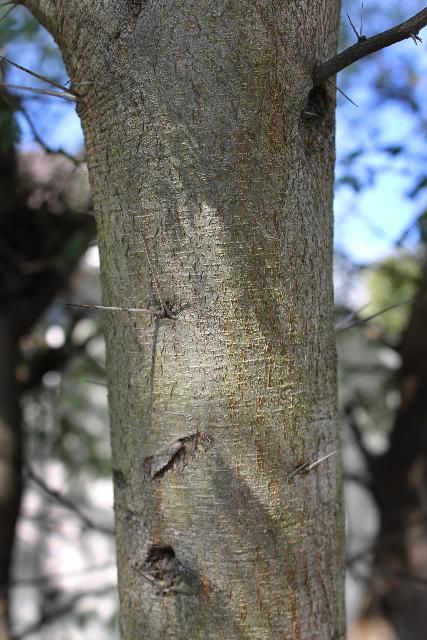
Credit: Gitta Hasing, UF/IFAS
Culture
Light requirement: full sun
Soil tolerances: clay; sand; loam; acidic; alkaline; well-drained to occasionally wet
Drought tolerance: high
Aerosol salt tolerance: moderate
Other
Roots: not a problem
Winter interest: no
Outstanding tree: no
Ozone sensitivity: unknown
Verticillium wilt susceptibility: resistant
Pest resistance: free of serious pests and diseases
Use and Management
It can be trained into a tree for use in median strips, or can be used as a street tree where there is not a need for tall vehicle clearance beneath the crown. The small stature and low, spreading branching habit makes pruning for vehicular clearance difficult unless it is properly trained from an early age. But the required input of man hours for early training may be offset by the high drought, pest, and insect resistance of the tree. Do not locate the tree too close to where people can be injured by the sharp thorns on the branches.
Although easy to grow in any acidic or alkaline soil, including clay, the leaves will drop if the soil is allowed to dry out. This drought avoidance mechanism allows the plant to grow well with no irrigation, once established. Growing best in full sun, this thorny, well-branched shrub makes an excellent barrier planting or nesting cover for wildlife. When trained as a small tree and used as a freestanding specimen, it is likely to provide a source for comments, such as "What's that?" Its growth rate is extremely slow, making it unpopular in the nursery trade but popular with those who care for it in the landscape. Sweet acacia has its place in any sunny shrub border or as an accent plant in any garden if located away from areas where children frequent, since the thorns can inflict severe pain. It is well suited for dry climates with little rainfall.
Propagation of sweet acacia is by seeds or cuttings.
Pests and Diseases
No pests or diseases are of major concern. Occasionally anthracnose can infect leaves.
References
Koeser, A. K., Hasing, G., Friedman, M. H., and Irving, R. B. 2015. Trees: North & Central Florida. University of Florida Institute of Food and Agricultural Sciences.
Koeser, A.K., Friedman, M.H., Hasing, G., Finley, H., Schelb, J. 2017. Trees: South Florida and the Keys. University of Florida Institute of Food and Agricultural Sciences.